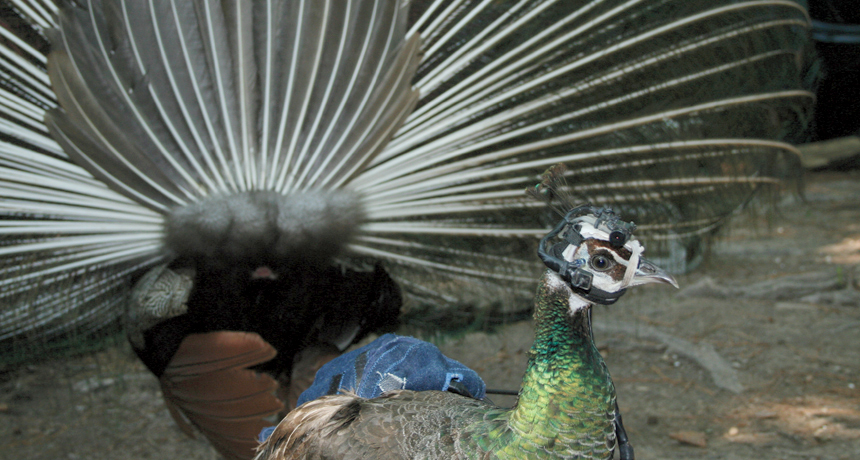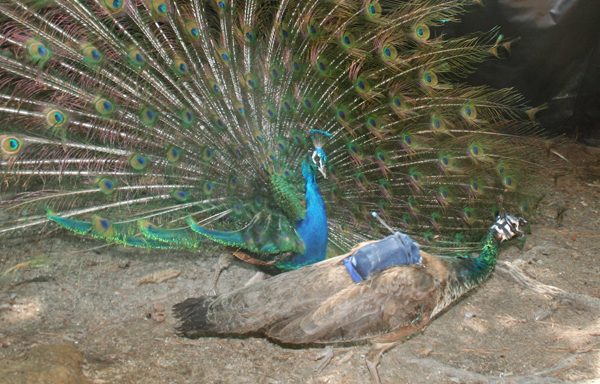
WATCHING YOU A peahen wears eye-tracking gear customized for birds. The helmet-mounted cameras and a data-transmitting backpack give the first glimpse of how much attention a female bird gives to a male’s magnificent train display.
Courtesy of J.L. Yorzinski







